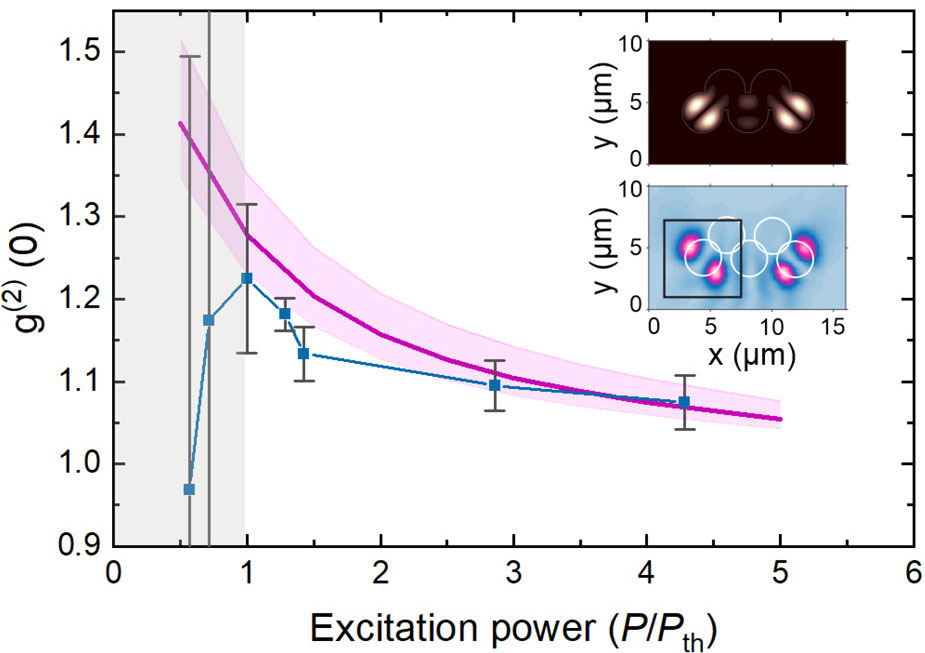주메뉴
- About IBS 연구원소개
-
Research Centers
연구단소개
- Research Outcomes
- Mathematics
- Physics
- Center for Theoretical Physics of the Universe(Particle Theory and Cosmology Group)
- Center for Theoretical Physics of the Universe(Cosmology, Gravity and Astroparticle Physics Group)
- Center for Exotic Nuclear Studies
- Center for Artificial Low Dimensional Electronic Systems
- Center for Underground Physics
- Center for Axion and Precision Physics Research
- Center for Theoretical Physics of Complex Systems
- Center for Quantum Nanoscience
- Center for Van der Waals Quantum Solids
- Chemistry
- Life Sciences
- Earth Science
- Interdisciplinary
- Center for Neuroscience Imaging Research(Neuro Technology Group)
- Center for Neuroscience Imaging Research(Cognitive and Computational Neuroscience Group)
- Center for Algorithmic and Robotized Synthesis
- Center for Genome Engineering
- Center for Nanomedicine
- Center for Biomolecular and Cellular Structure
- Center for 2D Quantum Heterostructures
- Center for Quantum Conversion Research
- Institutes
- Korea Virus Research Institute
- News Center 뉴스 센터
- Career 인재초빙
- Living in Korea IBS School-UST
- IBS School 윤리경영


주메뉴
- About IBS
-
Research Centers
- Research Outcomes
- Mathematics
- Physics
- Center for Theoretical Physics of the Universe(Particle Theory and Cosmology Group)
- Center for Theoretical Physics of the Universe(Cosmology, Gravity and Astroparticle Physics Group)
- Center for Exotic Nuclear Studies
- Center for Artificial Low Dimensional Electronic Systems
- Center for Underground Physics
- Center for Axion and Precision Physics Research
- Center for Theoretical Physics of Complex Systems
- Center for Quantum Nanoscience
- Center for Van der Waals Quantum Solids
- Chemistry
- Life Sciences
- Earth Science
- Interdisciplinary
- Center for Neuroscience Imaging Research(Neuro Technology Group)
- Center for Neuroscience Imaging Research(Cognitive and Computational Neuroscience Group)
- Center for Algorithmic and Robotized Synthesis
- Center for Genome Engineering
- Center for Nanomedicine
- Center for Biomolecular and Cellular Structure
- Center for 2D Quantum Heterostructures
- Center for Quantum Conversion Research
- Institutes
- Korea Virus Research Institute
- News Center
- Career
- Living in Korea
- IBS School
News Center
The first coherent topological polariton laser- A new methodology to combine light-matter coupling and geometry to achieve a high-performance light source - Researchers Meng Sun, Ihor Vakulchyk, and Ivan Savenko from the Center for Theoretical Physics of Complex Systems (PCS) within the Institute for Basic Science (IBS, South Korea), along with an international collaboration of physicists from Germany and the United Kingdom demonstrated the first highly coherent polariton laser based on topological mechanisms. They employed some of the most advanced technologies to produce an exciton-polariton microcavity supporting a topological defect mode (see Figure 1), measured the properties of the system, and built a theoretical model explaining them.
Topological phenomena - a unique family of purely geometrical effects -- appear in a wide variety of physical systems. One property of great interest is the existence of edge states that are robust against scattering by defects due to the topological protection. Exciton-polariton is a type of polariton that arises from the strong coupling between the confined light mode in a microcavity and an excited matter (exciton) mode. Topological phenomena in polaritonic systems are drastically different from those in other platforms due to the hybrid light-matter nature of these quasi-particles. In this work, the researchers built a semiconductor microcavity based on the etch-and-overgrowth process. This platform was able to experimentally achieve lasing at specific wavelengths by confining the exciton-polaritons to topologically protected edge states. In particular, they demonstrated that strong coherence can be attested by the so-called temporal coherence function g(2) (τ). The IBS researchers furthermore built a theory that can explain the source of this coherence phenomenon. They utilized a quantum trajectories method, which is one of the most powerful microscopic techniques to solve the Lindblad master equation that describes systems in contact with the environment. The simulation results appeared to closely reproduce experimentally measured data at higher pumping power (see Figure 2).
“This study is exemplary in its representation of modern research, which combines state-of-the-art experimental techniques and novel sophisticated all-quantum theoretical tools. It was a great opportunity to discover new fundamental and application-oriented properties of light”, comments Ivan Savenko, the leader of the Light-Matter Interaction in Nanostructures (LUMIN) team at PCS IBS. Notes for editors - References - Media Contact - About the Institute for Basic Science (IBS) |
|||
|
|
| Next | |
|---|---|
| before |
- Content Manager
- Public Relations Team : Yim Ji Yeob 042-878-8173
- Last Update 2023-11-28 14:20













